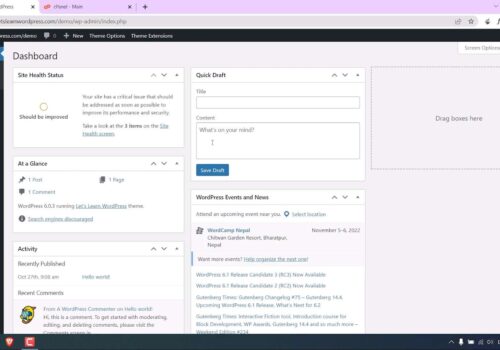Effective Solutions for Displaying WordPress Custom Fields
On February 24, 2023, the topic of missing custom fields in WordPress was brought into focus. Custom fields in WordPress are instrumental in enhancing the metadata associated with individual posts and pages, offering a degree of customization that tailors to specific website needs.
Understanding the Role of Metadata in WordPress Themes
The metadata displayed on a WordPress site varies based on the theme chosen. Common metadata types include post date, author, category, and tags, which are standard across most themes. For instance, the Generate Press theme used by Mike and myself exhibits post-date and author metadata. The flexibility of themes to select preferred metadata types for display is a significant aspect of WordPress customization.
Restoring Visibility of Custom Fields
In a recent update, WordPress reclassified custom fields as an additional feature, leading to their disappearance in default settings. To re-enable custom fields, navigate to the page or post edit view and follow these steps:
- Access ‘Options’ > ‘Preferences’ > ‘Panels’;
- In the ‘Additional’ section, activate the ‘Custom fields’ toggle and click ‘Enable & Reload’.
Note: Ensure to save any draft work before this process, as reloading WordPress might result in data loss.
Utilizing Advanced Custom Fields Plugin for Enhanced Functionality
For users seeking more flexibility and a user-friendly interface, the Advanced Custom Fields (ACF) plugin is an excellent alternative. It offers customization of field appearance and more control over field visibility on the live site. To use ACF:
- In the WordPress dashboard, go to ‘Plugins’ > ‘Add New’;
- Search for ‘Advanced Custom Fields’, install, and activate it;
- A new menu item, ‘Custom Fields’, will now be accessible in the dashboard.
Comparison Table
| Feature | Native WordPress Custom Fields | Advanced Custom Fields Plugin |
|---|---|---|
| Interface | Standard WordPress interface | User-friendly, intuitive interface |
| Flexibility | Basic customization options | Advanced customization and visibility control |
| Activation | Manual enabling required | Automatic activation upon installation |
| User Experience | Basic | Enhanced with more control and options |
Addressing WordPress Stuck in Maintenance Mode
In addition to the discussion on custom fields, another prevalent issue that WordPress users often encounter is the site getting stuck in Maintenance Mode. This section is seamlessly integrated into the article to provide a complete solution framework for common WordPress issues.
- Overview of Maintenance Mode Challenge: Occasionally, during updates, WordPress sites may inadvertently remain in Maintenance Mode, displaying a message indicating temporary unavailability;
- Root Causes: This issue often arises from incomplete or interrupted updates, which hinder the site’s return to normal operation;
- Resolving the Maintenance Mode Issue:
- Locate and Delete the Maintenance File: Access the site’s root directory through the hosting account’s File Manager or cPanel. Locate and delete the ‘.maintenance’ file, which is responsible for keeping the site in Maintenance Mode;
- Post-Deletion Checks: After deleting this file, it’s crucial to clear the site’s cache and verify that the website has resumed normal functioning. If problems persist, checking for plugin conflicts or server issues is advisable.
- Preventive Measures: To minimize future occurrences, ensure regular backups before updates and consider executing updates during low-traffic periods. Opting for a hosting provider with reliable uptime and support can also mitigate such issues.
Video Guide
To answer all your questions, we have prepared a video for you. Enjoy watching it!
Conclusion
This article concludes by emphasizing the recent change in WordPress where custom fields are now considered an additional feature. It guides users through the process of re-enabling native custom fields and introduces the Advanced Custom Fields plugin as a versatile alternative for those seeking more robust customization options.





